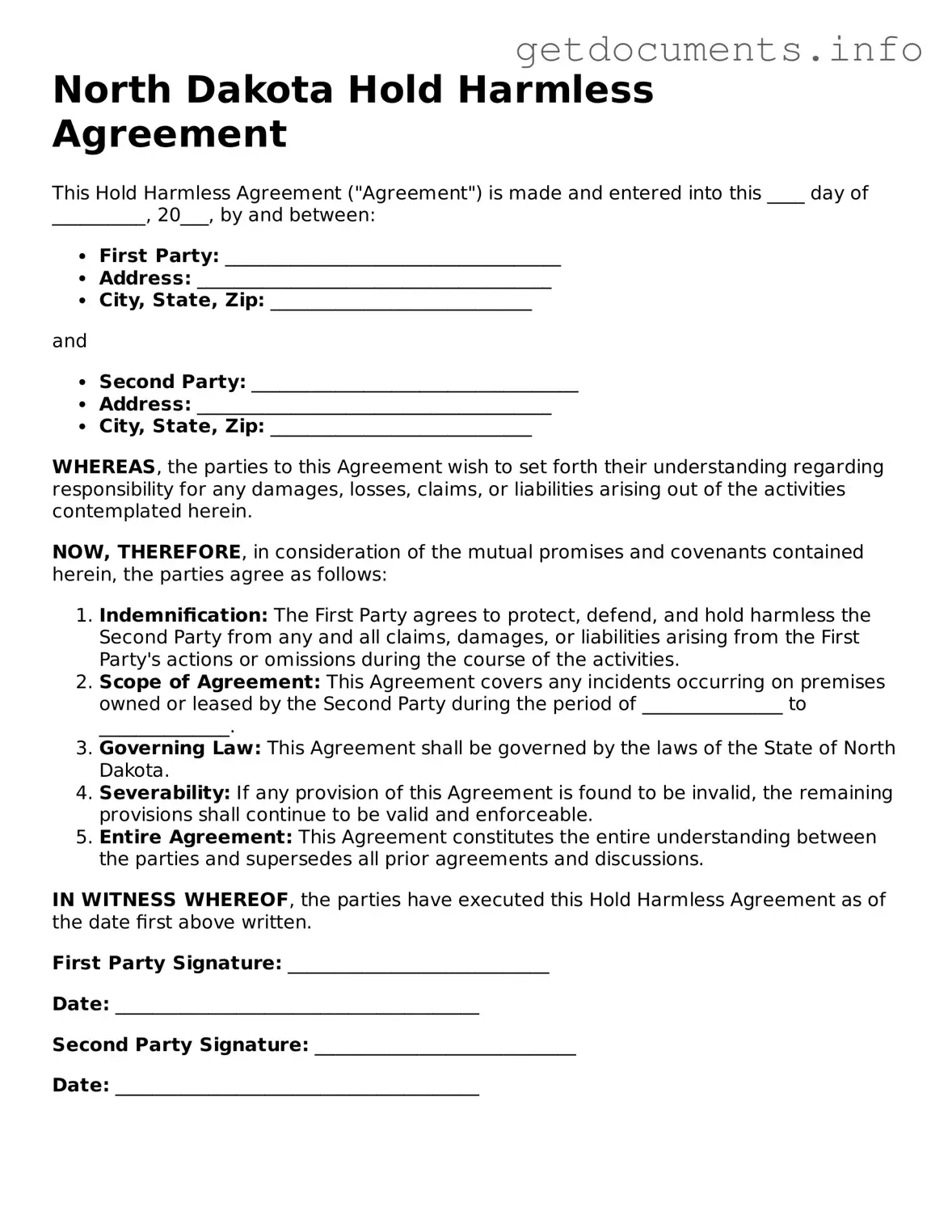Free Hold Harmless Agreement Template for North Dakota
The North Dakota Hold Harmless Agreement form is a legal document designed to protect one party from liability for any damages or injuries that may occur during a specific activity or event. By signing this agreement, individuals or organizations agree not to hold each other responsible for unforeseen incidents. It is crucial to understand the implications of this form, so be sure to fill it out accurately by clicking the button below.
Access Hold Harmless Agreement Editor
